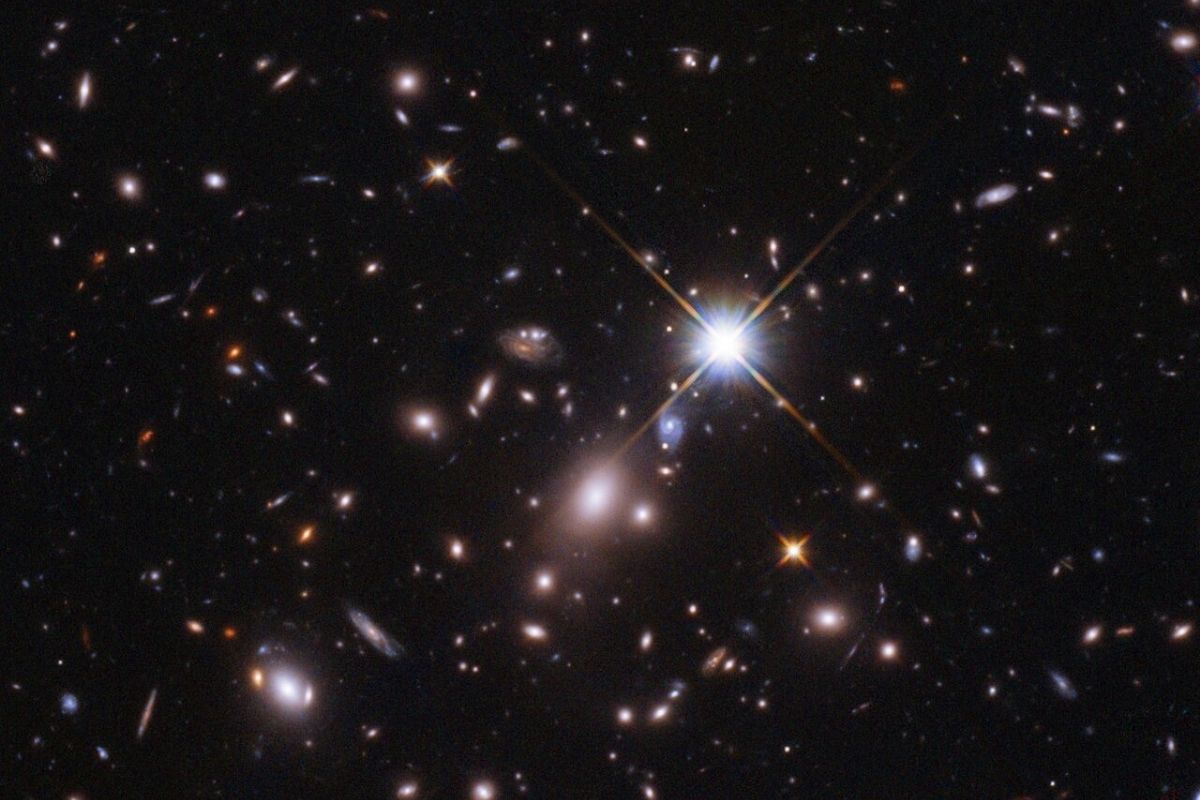
The star, which has been given the name Earendel, was found at a distance of no less than 12.9 billion light-years.
The record has been broken. The Hubble Space Telescope has detected the light from a star that existed in the first billion years after the birth of the universe. With this, the space telescope is writing history. Because never before has such a distant star been discovered.
Previous record holder
The find is a huge jump back in time compared to the previous record holder. In 2018, Hubble observed the light from a star more than nine billion light-years away. At that time, the universe was only 4.4 billion years old, or thirty percent of its current age. While that was already a huge milestone, the distance record has now been improved.
Get to know Earendel
The newly discovered star has been given the name Earendel, which means “morning star” in Old English. Earendel is so far away that its light has taken 12.9 billion years to reach Earth. This star existed in the “infancy” of our universe, when the universe was only 7 percent of its current age. The smallest objects previously observed at such a great distance are clusters of stars, embedded in early galaxies.

The star nicknamed Earendel, here indicated by an arrow. Image: NASA, ESA, B. Welch (JHU), D. Coe (STScI), A. Pagan (STScI)
Researchers are pleasantly surprised with the discovery. “We almost didn’t believe it at first,” recalls researcher Brian Welch. “This star is so much further away than the previous record holder. Normally, whole galaxies look like tiny specks at this distance, where the light from millions of stars merges. However, the galaxy that houses Earendel has been enlarged and distorted by a ‘gravity lens’ (see box) and now takes the shape of a long, crescent moon.”
A gravitational lens is like a cosmic magnifying glass and bends the light from distant objects. Suppose two galaxies are – seen from Earth – one behind the other. One galaxy is five billion light-years from our planet, while the other is eight billion light-years away. Light from the distant galaxy travels past the foreground galaxy and is deflected and possibly amplified.
The discovery means we can better understand a still unknown era in the history of our universe. “Earendel existed so long ago that it may not have the same resources as the stars today,” Welch explains. “Studying Earendel will be a window into an era of the universe we don’t know, but that has led to everything we know. It’s like we’ve read a really interesting book, but we started with the second chapter. And now we get the chance to see how it all started.”
heavy star
The research team estimates that Earendel has at least 50 times the mass of our sun and is millions of times brighter. It means it can compete with the heaviest stars we know. But even such a brilliant, very massive star would be impossible to see at such a great distance without the aid of a gravitational lens caused by a huge cluster of stars that sits between us and Earendel. Astronomers expect Earendel to remain highly magnified for years to come.
James Webb
Later this year, the recently launched James Webb Telescope will take care of the distant star. The hope is that Webb can reveal more information about the star, including its age, temperature, mass and radius. If further research shows that Earendel is only made up of hydrogen and helium, it could provide the first evidence for the legendary Population III stars, believed to have been the very first stars to form after the Big Bang.
The Population III stars lived for a very short time – possibly several hundred thousand years – but have been important for the “evolution” of the universe. These stars quickly convert light elements into heavier elements, such as oxygen, nitrogen, carbon and iron. Without these elements we would not have existed, because they are very important for the origin of life. These primordial stars have not yet been observed. But they may become detectable if they are magnified very strongly by gravitational lenses, as in the case of Earendel.
Earendel’s find is just the beginning. There may be many other distant stars — or even further stars — waiting to be discovered. “With Webb, we can observe stars that are even more distant than Earendel, which would be incredibly exciting,” Welch says. “We are going back as far as possible. I’d love to see Webb break Earendel’s distance record.”
Source material:
†A Record Broken: Hubble Finds the Most Distant Star Ever Seen” – Hubble
Image at the top of this article: NASA, ESA, B. Welch (JHU), D. Coe (STScI), A. Pagan (STScI)